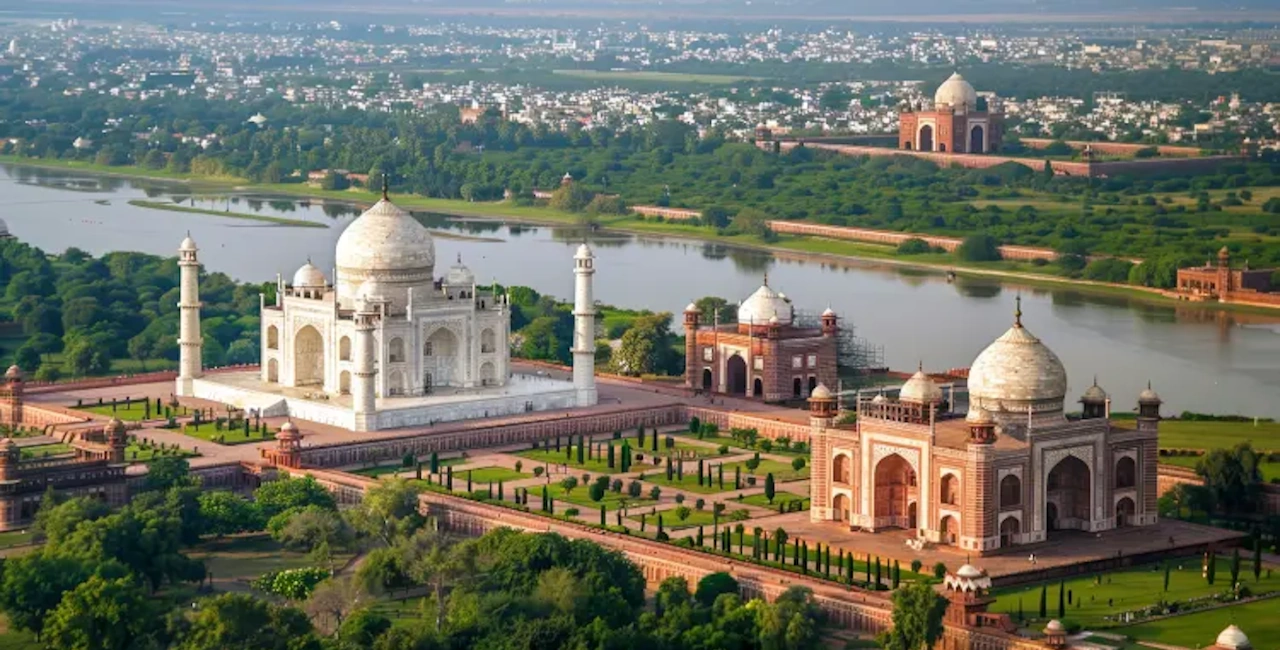Agra, a city in the northern Indian state of Uttar Pradesh, is globally renowned for its rich history, architectural marvels, and cultural heritage. Situated on the banks of the Yamuna River, Agra is most famous for the Taj Mahal, one of the Seven Wonders of the World. However, the city’s allure extends far beyond this iconic monument, encompassing a range of historical sites, vibrant markets, and a rich tapestry of Mughal culture.
Historical Significance
Agra’s history is intricately linked with the Mughal Empire, which established the city as a capital during their reign in India. The city gained prominence under the Mughal rulers, particularly during the reign of Akbar, Jahangir, and Shah Jahan. Each of these emperors left an indelible mark on Agra through the construction of grand buildings, forts, and gardens.
One of the earliest mentions of Agra is in the epic Mahabharata, where it is referred to as Agravana. However, it was during the Mughal era that Agra truly flourished as a center of art, culture, and commerce. The city served as the capital of the Mughal Empire from 1556 to 1648, after which the capital was moved to Delhi by Shah Jahan.
The Taj Mahal
The Taj Mahal, a UNESCO World Heritage Site, is undoubtedly the crown jewel of Agra. Built by Emperor Shah Jahan in memory of his beloved wife Mumtaz Mahal, the Taj Mahal is a masterpiece of Mughal architecture. Constructed entirely of white marble, it is renowned for its symmetrical design, intricate carvings, and beautiful gardens.
The Taj Mahal is more than just a monument; it is a symbol of love and an architectural marvel that attracts millions of visitors from around the world each year. The site includes a mosque, a guest house, and formal gardens bounded on three sides by a crenellated wall. The beauty of the Taj Mahal is enhanced during sunrise and sunset when the marble reflects the changing hues of the sky.
Agra Fort
Another significant landmark in Agra is the Agra Fort, also known as the Red Fort of Agra. This UNESCO World Heritage Site served as the main residence of the Mughal emperors until the capital shifted to Delhi. The fort is a massive structure made of red sandstone and encompasses a complex of palaces, halls, mosques, and gardens.
Key attractions within the Agra Fort include the Diwan-i-Am (Hall of Public Audience), Diwan-i-Khas (Hall of Private Audience), Jahangir’s Palace, and the Khas Mahal. The fort’s robust walls and strategic design reflect its historical importance as a military base and royal residence.
Fatehpur Sikri
Located about 37 kilometers from Agra, Fatehpur Sikri is another UNESCO World Heritage Site that adds to the city’s historical significance. Built by Emperor Akbar in the 16th century, Fatehpur Sikri was intended to be the capital of the Mughal Empire. However, due to water scarcity, the city was abandoned after just 14 years.
Fatehpur Sikri is renowned for its well-preserved buildings and layout, which exemplify the architectural brilliance of the Mughal era. Key attractions include the Buland Darwaza, Jama Masjid, Panch Mahal, and the Tomb of Salim Chishti.
Cultural Heritage
Agra’s cultural heritage is deeply rooted in its Mughal past. The city is known for its traditional crafts, including marble inlay work, also known as pietra dura, which is famously used in the decoration of the Taj Mahal. Visitors can explore local markets to purchase exquisite handicrafts, textiles, leather goods, and jewelry.
The city also has a rich culinary tradition, with Mughlai cuisine being a highlight. Famous dishes include biryani, kebabs, and pethas (a sweet delicacy made from ash gourd). The bustling streets and markets of Agra, such as Sadar Bazaar and Kinari Bazaar, offer a glimpse into the local lifestyle and flavors.
Modern Agra
While Agra is steeped in history, it is also a bustling modern city with a growing economy. The city has a mix of old and new, with contemporary amenities, educational institutions, and a thriving tourism industry. Efforts are continually made to preserve its historical sites while accommodating the needs of a growing population.
Conclusion
Agra is a city that seamlessly blends its historical grandeur with modern vibrancy. From the iconic Taj Mahal and the majestic Agra Fort to the abandoned city of Fatehpur Sikri, Agra’s historical landmarks tell the story of its glorious past. Its rich cultural heritage, traditional crafts, and delectable cuisine further enhance its appeal. Whether you are a history enthusiast, a culture lover, or a casual traveler, Agra offers a wealth of experiences that leave a lasting impression.


0 Comment